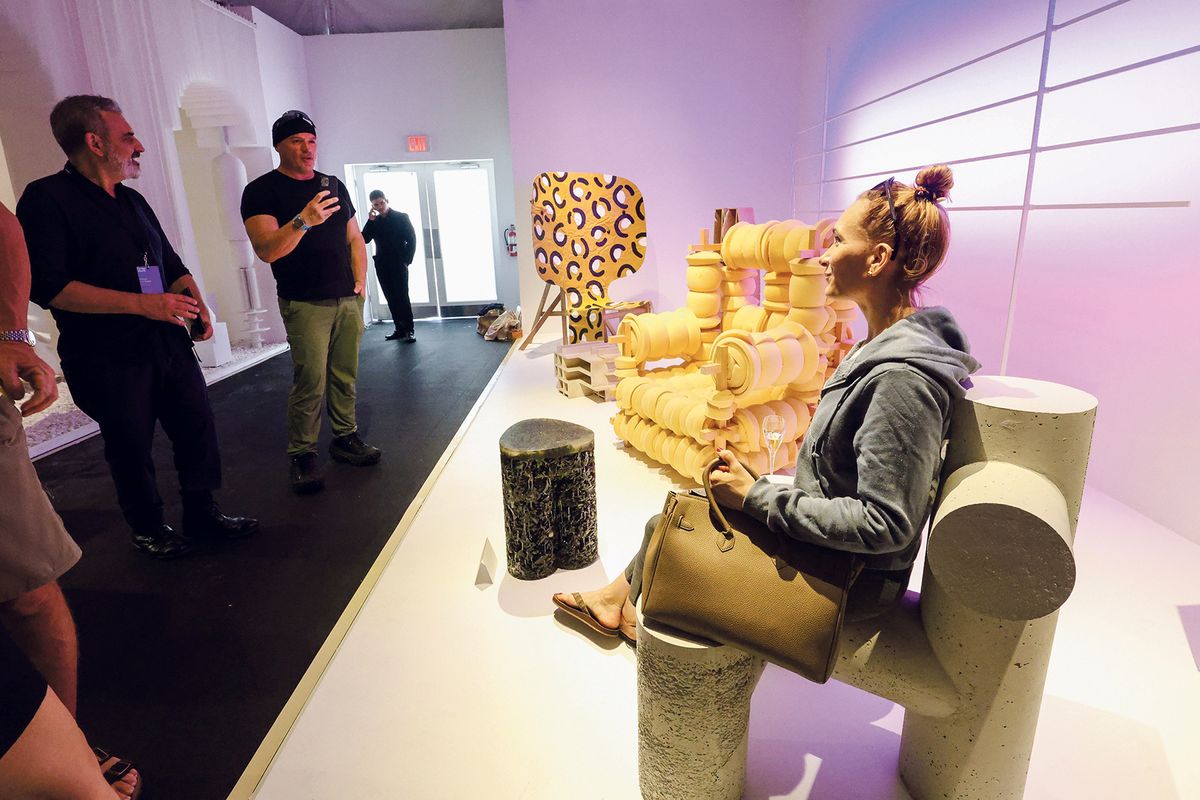On the opening day of Design Miami’s VIP preview for its Paris debut in October, the design fair made headlines with the announcement that it would be acquired by the digital marketplace Basic.Space. The timing made one thing clear: Design Miami has its sights set on capturing the attention of the next generation—digitally and globally. “This acquisition will get us to where we’ve always wanted to be—just faster,” says Jen Roberts, the fair’s chief executive.
Founded in 2005, Design Miami has established itself as a global design authority. Today, it is seen as the design-fair counterpart to Art Basel. To some, its acquisition may come as a surprise, given that Basic.Space’s branding is largely targeted at a young, trendy audience—focused on celebrity-branded collaborations and product “drops”. In a 2021 interview with Vogue, Basic.Space’s chief executive, Jesse Lee, described the platform as “Soho House meets Raya” (referring to the celebrity-driven, invite-only dating app). The company’s first 100 sellers—which included the designer Virgil Abloh and the DJ Steve Aoki—boasted a cumulative 50 million followers on social media.
However, Design Miami and Basic.Space have long been connected; Craig Robins, the design fair’s co-founder and chairman, was an early investor in Basic.Space. “It was our shared perspective and Craig’s support for Basic.Space’s ability to unlock the potential for both that sparked discussions about joining forces,” Lee says.
Although the team did not elaborate about any concrete changes for this month’s event, it is fair to assume that there will be an emphasis on the digital experience of Basic.Space’s platform, which Roberts notes “will be increasingly instrumental in supporting our many collaborations, partnerships and special projects”.
For exhibitors, this digital push comes with promising opportunities. “I think it’s going to turn out to be something really phenomenal,” says Zesty Meyers, a principal at R & Company, an exhibitor at the fair since its early days. Many of Meyers’s clients at Design Miami have been buying from him for two decades; “I need to make sure we grow into a younger generation that wants to collect,” he says, adding that Basic.Space’s involvement could be “that time to mix it up with more 21st-century ideas”. Meyers also points out that compared to the art world, design brings in just a fraction of the money. “I’m hoping that it creates another level of community experience to take our tiny movement to a billion-dollar industry,” he says.
A looming question is whether a platform like Basic.Space—with its focus on celebrities and trendy products, both antithetical to the idea of timeless collectible design—will depreciate the fair’s prestige, but the tone among dealers remains primarily optimistic. “Now that we are in an era when one can become very visually close to art yet online from afar, a company that works in that field sounds interesting,” says Adrian Sassoon, a London-based design dealer who visited the fair while it was still run by Robins, recalling its “sharp and appealing feel”.
Meyers also does not believe that Lee has any inclination to alter the brand’s identity. “Of course, the first thing people are going to look at is that Basic.Space sells sneakers or skateboards,” he says. “Lee is 100% not interested in doing that to Design Miami because he has already done that. If he wanted more action on that low-end price point, he’d be trying to buy 1stDibs or other websites.”
Loïc Le Gaillard, a co-founder of Carpenters Workshop Gallery and a Design Miami exhibitor since 2009, echoes this positive outlook. “Miami marks an important point in the art-world calendar as a moment to highlight some of the most significant works of our artists,” he says. “I look forward to seeing how Basic.Space will expand the fair’s digital ability to connect with collectors and new audiences.”
Basic.Space has plenty of capital to continue making headwinds. It raised $8m in 2021 and an additional $15m in 2022. In August, Robins—a real-estate mogul who is the quiet force responsible for much of Miami’s Design District today—closed on a $250m retail-focused revamp for the district. “I think there is probably more to come,” Meyers speculates. But what exactly that means remains to be seen.


